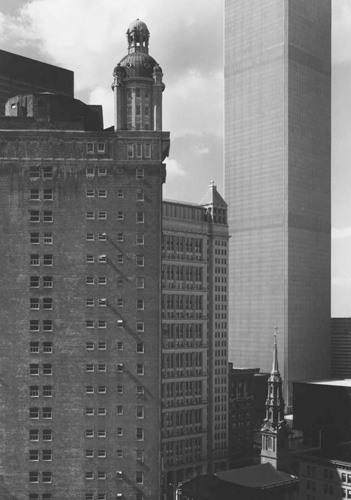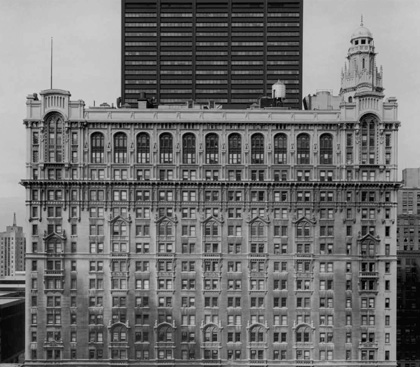
| |
 |
On Wall Street: Architectural Photographs of Lower Manhattan, 1980–2000 nominated for a 2013 Independent Publisher Book Award, and the 2013 New York City Book Award. Photo-Op: Going Up |
| "David Anderson's poignant photographs capture the coldness, power, and impregnability of the mythical Wall Street. Devoid of the flux of street movement and crowds, the monuments speak. Creatures keep watch, frozen in stone, while surprising traces of decay and delicate detail suggest the contingency, even frailty, of human existence. Paul Goldberger's masterful introduction guides us as well in seeing and appreciating this historic citadel of American finance." ―Gail Fenske, author of The Skyscraper and the City: The Woolworth Building and the Making of Modern New York and Professor of Architecture at Roger Williams University "From 1980 to 2000, photographer David Anderson documented Wall Street's architecture as few others have. Through an extensive range of black-and-white images whose focus is equally on the historic character and iconic nature of the buildings, a real sense of this famous place emerges. I compare the look and feel of Anderson's photographs to some of the great urban photographers of all time: Berenice Abbott, Eugene Atget, Paul Strand, and, more recently, Thomas Struth and Bob Thall. On Wall Street will be an immediate classic that not only appeals to the aesthetic of architects, historians, and photographers, but also functions at street level for those who love cities everywhere and, especially, New York." |
 |
 |
"On Wall Street: Architectural Photographs of Lower Manhattan, 1980–2000 by David Anderson, with an introduction by Paul Goldberger, is a highly acclaimed black-and-white photography book which documents the historic and architecturally beautiful buildings of the Wall Street district that were designed and built by craftsmen of a bygone era of the Victorian Era. The images were made over a 20-year period, and the photographer ended his project a year before the bombing of the Twin Towers. The book is important not only for the expert photographs and excellent commentary about the photos, but also because 9/11 showed us that, no matter how permanent structures appear, they will not be here forever. Photographers, historians, and architecture enthusiasts will want this book for their collection." "An architectural shift left Manhattan with an unusual blend of buildings. On Wall Street: Architectural Photographs of Lower Manhattan, 1980-2000 is a collection of black-and-white photography from David Anderson, snapping photos on the aftermath of the new construction past the 1970s, offering a snapshot of the twilight of the twentieth century with soulful black-and-white photography, capturing the details of these buildings. On Wall Street is a must for historical and architectural photography collections; highly recommended." "Anderson had been working as a cinematographer for at least fifteen years before becoming an architectural photographer in the early 1980s. He explains in his preface that he decided to document Wall Street's buildings, knowing that the particular aesthetic and harmony of their design was not being replicated in newer buildings and wishing to capture their distinctive geometry and details. The project took him twenty years. This volume presents his black-and-white images full page, with an introductory essay by architecture critic Paul Goldberger. The book measures 9.0" x 11.0".
|